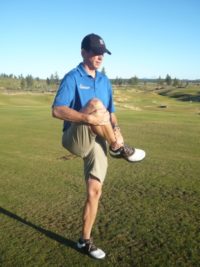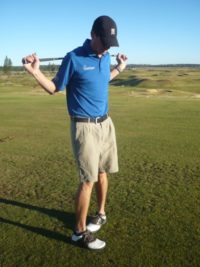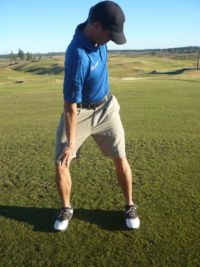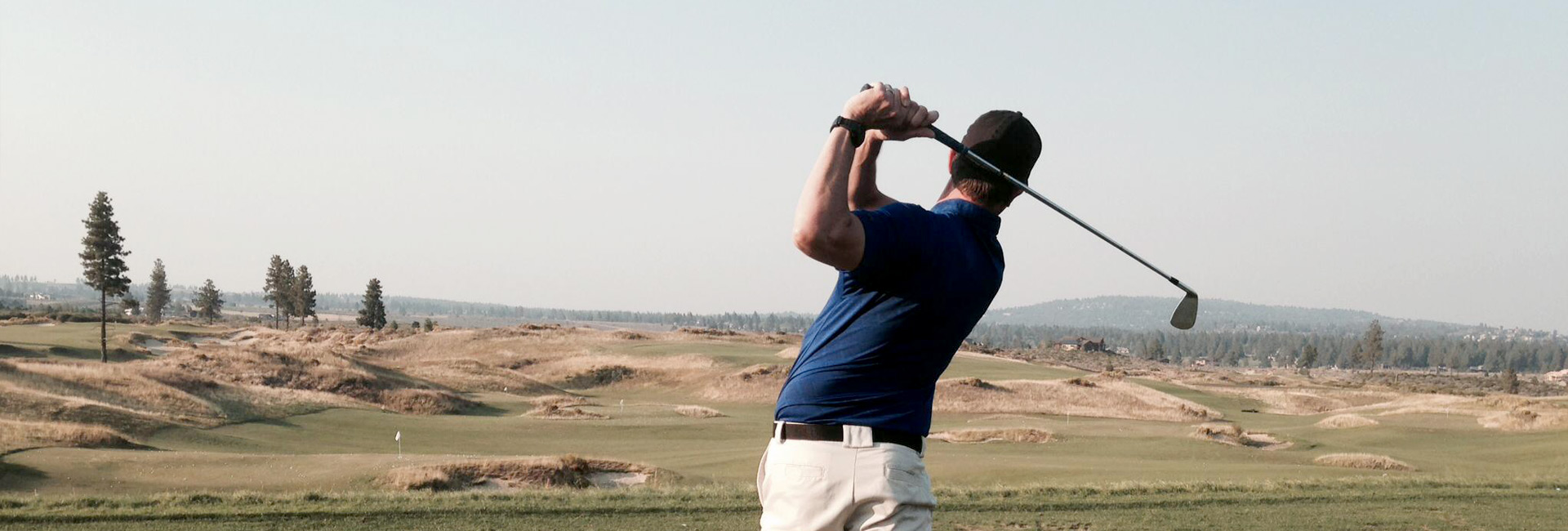After you get to the top of your backswing, you have to get back to the ball. A lot has to happen to do this consistently while avoiding injury. In part one of the backswing pivot blog post, we spoke about the need for hip and mid-back MOBILITY (or flexibility) to create a good backswing pivot. This post will focus on the need for hip and pelvic strength (or STABILITY) to get you from the top of your backswing through impact and into your finish.
No matter how you got to the top of the backswing, you have to get out of it. Ideally this will require some strength and balance from both legs. As the downswing is started, the shift toward the left requires some push off from the right side. In the backswing pivot the right hip coiled internally, then held and now needs to uncoil and push your body weight to the left. Your glute max is the “king” of power in your golf swing. Along with some other smaller glute muscles, your right glut max is going to uncoil the inwardly rotated right hip into an externally rotated position through impact. To create space for your pelvis to rotate and clear to the left, the left leg will “post” or straighten and the left hip will now go from an externally rotated position to full internal rotation at the finish. The left hip becomes the pivot point from which your pelvis and trunk rotate around. When you push off the right side, the left foot will stamp down in order to straighten and allow the pivoting around to the left. This requires left leg strength.
Strengthening your legs:
The best way to strengthen both of your legs is to exercise them with your feet on the ground pushing against your body weight or possibly more using external weights. Squats and lunges are two of my favorite lower body strengthening exercises as long as you know proper technique as you can end up making matters worse if you are not doing them correctly. The key is to keep your knee in good alignment with your hips and ankles. Just remember, as you look down from where your head is positioned on the midline of your body, the knees will need to “look” like they are outside of your feet in order to actually be aligned. A mirror is very helpful to make sure your joints line up.
The other major thing to be mindful of is to keep your knees from extending past your toes. Think of it as a pane of glass extending straight up from the tip of your toes, you want to avoid your knee breaking the glass both on the squats and lunges at the deepest depth. Adding rotation of your trunk with or without extra weight (dumbbell, kettle bell, medicine ball, etc) while maintaining your lower body alignment will engage your core during both squats and lunges. I advocate “pre-loading” your core, however prior to performing straight squats and lunges and most definitely prior to these exercises with a twist. Pre-loading involves drawing your navel toward your spine at a low intensity and contracting your abdominals at 20-30% of a maximal contraction. This insures muscular support of your lower back/spine.



Not only does your left leg need to be strong as you transfer up to 95% of your weight onto it into the finish, it also has to be able to hold you upright without falling over. If you cannot stand on your left leg unassisted, most likely you will have a difficult time finishing your pivot. Practice standing on the left leg whenever you think about it. You can do this any old time of day. The more the better. You can also consider working on left leg standing with left trunk rotation to simulate what your hip will need to negotiate through the pivot.
There are numerous exercises to strengthen your hips and trunk to create a powerful golf swing. If you would like an off-season strength and conditioning program that is custom for your body’s limitations, consider a TPI assessment and allow me to create a program that you can do in your home or at the gym. Email me at [email protected] with any golf fitness or injury questions.

